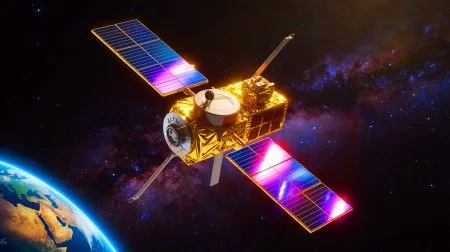| IN A NUTSHELL |
|
The realm of underwater communication has long been shrouded in challenges, but a recent breakthrough by Chinese researchers has shifted the paradigm. Scientists at Northwestern Polytechnical University have successfully transmitted acoustic data over 375 miles without errors, heralding a new era in long-range underwater messaging. This innovation is poised to revolutionize both civilian and military applications, offering a potential leap in how we communicate beneath the waves. The implications of such a technological feat are vast, inviting both admiration and curiosity about the future of underwater communications.
Breaking New Ground in Underwater Communication
Underwater communication has always been a challenging domain due to the unique and harsh conditions of the marine environment. The recent achievement by Chinese researchers, however, marks a significant milestone. The technology relies on a self-tuning system capable of identifying signal clusters in noisy underwater environments. This is achieved without prior knowledge of seabed topography, which is a remarkable advancement for naval operations. The system’s ability to maintain data integrity over a distance of 375 miles is unprecedented and builds on previous efforts, such as a 2010 US Navy experiment that managed communication over 342 miles.
The breakthrough was detailed in Acta Acustica, a leading acoustics journal, and showcases a method that could potentially support critical operations where zero-error transmission is non-negotiable. From military communications to scientific research, the implications of error-free long-range communication are profound. As this technology develops, one can only imagine the new horizons it will open up in underwater exploration and national defense strategies.
Technical Innovations Behind the Breakthrough
Achieving zero-error transmission under challenging underwater conditions is no small feat. The team, led by Professor He Chengbing, developed an innovative algorithm that transforms turbulent, time-varying channels into quasi-static ‘acoustic snapshots’. This sophisticated technique allows for iterative error correction, akin to enhancing a blurry photo with multiple exposures. Such advancements are crucial for maintaining data integrity, especially in military applications where precision is paramount.
Despite these achievements, the technology remains resource-intensive. It requires teraflop-scale computing power for processing, which limits its real-time application on smaller platforms, like drones. Additionally, the technology must contend with environmental challenges such as sudden weather changes or abrupt maneuvers, which can disrupt the communication channel. Nonetheless, the ongoing research and development efforts promise to address these challenges, paving the way for more robust and reliable underwater communication systems.
China’s Deep-Sea Experiments Yield Promising Results
In 2021, the team conducted tests at a deep-sea location, achieving zero-bit-error acoustic transmissions over distances of 202 and 370 miles. The experiments utilized an eight-element hydrophone array and coded QPSK signals, with a transmission speed of 37.5 bits per second. The trials demonstrated the system’s capability to facilitate error-free communication across vast underwater distances, a critical requirement for effective military and scientific operations.
The experiments employed a 176-decibel sound source operating within the extremely low-frequency range, which is ideal for long-distance underwater communication due to its ability to minimize attenuation. This approach underscores the university’s role as a key player in national defense research and its ongoing contributions to China’s advancements in naval technology. Despite facing international scrutiny and sanctions, the institution continues to push the boundaries of underwater acoustic communication.
Future Implications and Global Impact
The successful development of this technology could redefine global underwater communication standards. The ability to maintain data integrity across vast distances holds significant promise for military, scientific, and commercial applications. From activating underwater drones to enhancing marine research capabilities, the possibilities are vast and varied. Moreover, the technology could improve the safety and efficiency of maritime operations, contributing to broader geopolitical strategies.
As China continues to invest in this field, its advancements will likely influence international collaborations and competitive dynamics in underwater communication technology. The potential for this innovation to enhance global connectivity and security cannot be understated. As researchers strive to overcome the remaining challenges, one must ponder: how will this technological leap shape the future of underwater exploration and communication on a global scale?
Did you like it? 4.6/5 (25)








Wow, 375 miles underwater? That’s some serious tech! 🌊
Can this tech be used for scientific purposes, like deep-sea research?
Are there any environmental concerns with this kind of underwater communication?
Is “zero-error” transmission really achievable in such conditions?
How does the self-tuning system work exactly? Sounds complex!
Is this tech already being used by the Chinese military?
Another great leap for China. What’s next, underwater WiFi? 😅
How secure is this form of communication from potential eavesdroppers?
This could change everything for marine biology research!
How does this compare to similar US Navy tech? 🤔
Could this tech affect global submarine operations?
Can any other countries replicate this achievement soon?
Thank you for shedding light on this fascinating topic! 🌟
Is there any possibility of this tech being weaponized?
Wow, the computing power needed is immense! How sustainable is that?
How does this technology work with existing communication systems?
Does this mean we might have underwater internet soon? 🌐
I can’t even get a decent signal in my basement! 😂
Exciting yet worrisome. What does this mean for global security dynamics?
Can this be the future of global underwater communication? 🤩
Does this mean we’ll see more underwater drones soon?
Is there any room for international collaboration on this technology?
Am I the only one who thinks this sounds like something out of a James Bond movie? 🎥
Great article! Thanks for breaking it down for us. 😊
China’s tech advancements are both impressive and a bit scary. Thoughts?
How long until this tech becomes mainstream for commercial use?
Isn’t this just another escalation in the global tech arms race? 😟
375 miles? That’s longer than I can run! 😂
Thank you for the informative piece. It really highlights the stakes involved.
Does anyone else find the idea of underwater messaging kinda sci-fi?